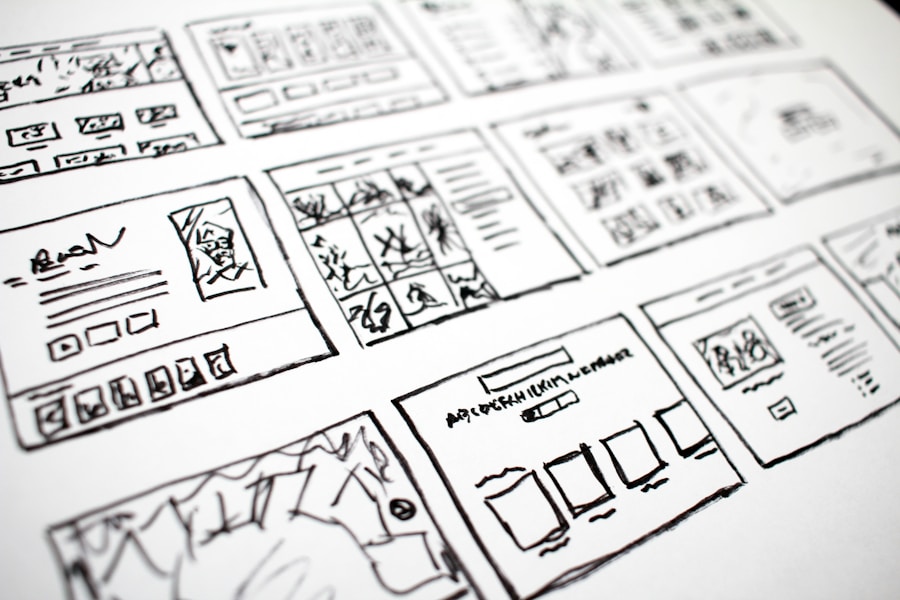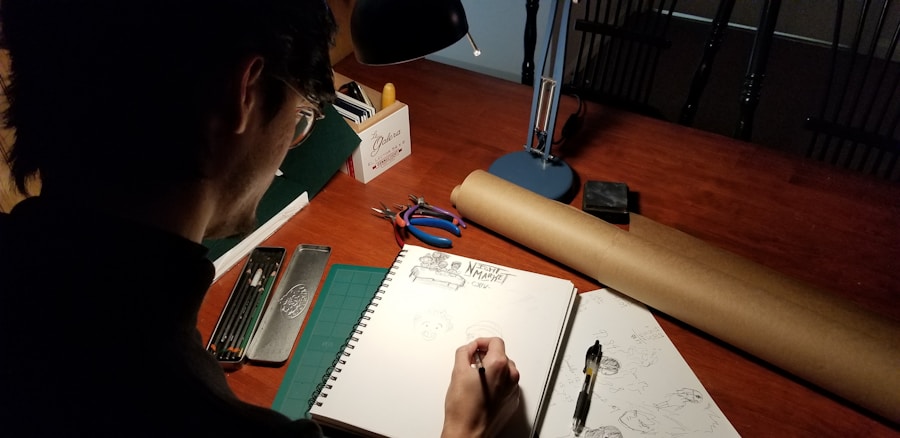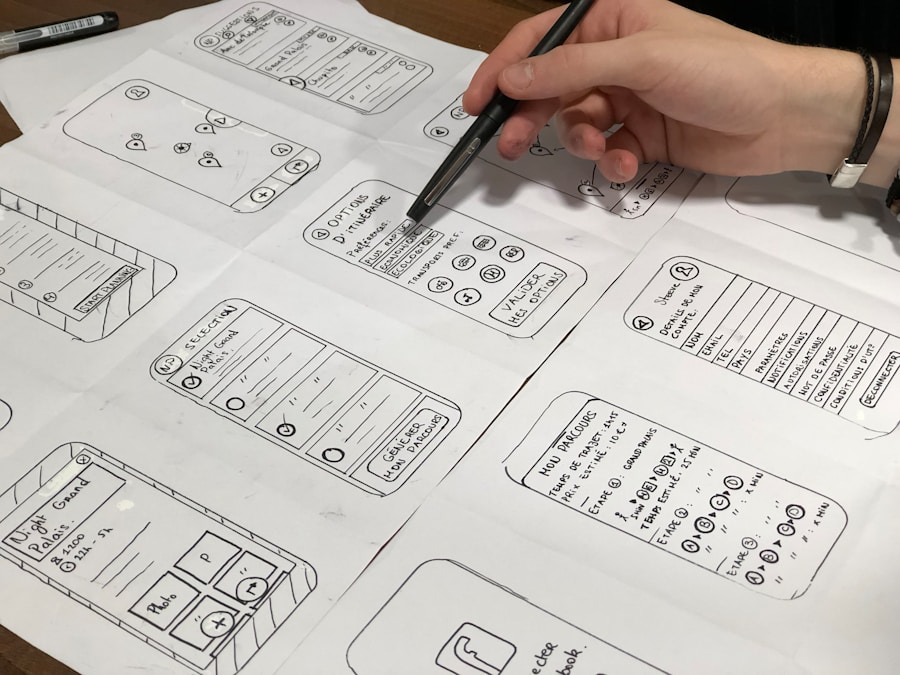Storyboarding is an essential part of the filmmaking process, serving as a visual blueprint for the narrative. It allows you to map out scenes, visualize character movements, and establish the pacing of the story before the cameras start rolling. As you delve into the world of storyboarding, you’ll find that it’s not just about drawing; it’s about translating a script into a visual language that communicates the essence of the story.
This process is particularly crucial in genres like science fiction and fantasy, where the visuals play a significant role in immersing the audience in an extraordinary world. When you engage in storyboarding, you’re not merely sketching images; you’re crafting a narrative flow that guides the viewer’s experience. Each frame serves as a snapshot of a moment in time, capturing the emotions, actions, and settings that will eventually come to life on screen.
This meticulous planning helps to ensure that every element of the film aligns with the director’s vision, making it a vital tool for anyone involved in the creative process. In this article, we will explore how storyboarding plays a pivotal role in bringing iconic franchises like Godzilla to life, examining its intricacies and the collaborative efforts that shape these cinematic masterpieces.
Key Takeaways
- Storyboarding is a crucial part of the filmmaking process, providing a visual blueprint for the story and action sequences.
- The Godzilla franchise has a rich history and a dedicated fan base, making it important to stay true to the essence of the series in storyboarding.
- Storyboarding involves a creative process that requires a deep understanding of the characters, themes, and visual style of the film.
- Collaboration with directors and producers is essential in ensuring that the storyboard aligns with the vision and budget of the film.
- Incorporating Japanese culture and mythology is key to capturing the essence of Godzilla and creating an authentic and immersive experience for the audience.
Understanding the Godzilla Franchise
Evolution of the Franchise
The franchise has expanded to include numerous films, animated series, and even comic books, each contributing to the rich tapestry of Godzilla’s legacy. Understanding the Godzilla franchise requires an appreciation for its historical context and cultural significance.
From Destructive Force to Protector of Earth
Over the years, Godzilla has transformed into a multifaceted character, often portrayed as both a destructive force and a protector of Earth. This duality adds depth to the storytelling, allowing for diverse interpretations and adaptations.
A Timeless Icon in Global Cinema
As you immerse yourself in this universe, you’ll see how each installment reflects societal concerns and artistic innovation, making Godzilla a timeless icon in global cinema.
The Creative Process Behind Storyboarding

The creative process behind storyboarding is both an art and a science. It begins with a thorough understanding of the script and the director’s vision. As you embark on this journey, you’ll need to break down the screenplay into manageable segments, identifying key scenes and moments that require visual representation.
This involves not only reading the dialogue but also interpreting the underlying emotions and themes that drive the narrative forward. You’ll find that effective storyboarding requires a keen eye for detail and an ability to envision how each scene will unfold on screen. Once you have a grasp of the script, you can start sketching out your ideas.
This is where your creativity truly shines. You’ll create rough drawings or digital illustrations that capture the essence of each scene, focusing on composition, camera angles, and character positioning. As you work through this process, remember that storyboarding is iterative; it’s common to revise and refine your boards multiple times based on feedback from collaborators.
This flexibility allows you to explore different visual styles and approaches until you find the perfect representation of the story.
Collaborating with Directors and Producers
Collaboration is at the heart of successful storyboarding, especially when working on high-profile projects like those in the Godzilla franchise.
This partnership is crucial for ensuring that your storyboards align with their expectations while also allowing your creative input to shine through.
You’ll learn to navigate this dynamic by actively listening to their ideas and incorporating their feedback into your work. During this collaborative process, it’s essential to maintain open lines of communication. Regular meetings and discussions can help clarify any uncertainties and foster a shared understanding of the project’s goals.
You may find yourself presenting your storyboards in various formats—whether through digital presentations or printed boards—allowing directors and producers to visualize your concepts effectively. This back-and-forth exchange not only enhances your own skills but also strengthens the overall vision for the film, ensuring that everyone is on the same page as production progresses.
Incorporating Japanese Culture and Mythology
One of the most fascinating aspects of storyboarding for the Godzilla franchise is the opportunity to incorporate Japanese culture and mythology into your work. Godzilla is deeply rooted in Japanese history, reflecting societal fears and cultural narratives that have evolved over time. As you create storyboards for these films, you’ll want to pay homage to these elements while also making them accessible to a global audience.
This requires a nuanced understanding of cultural references and an ability to weave them seamlessly into the visual storytelling. Incorporating Japanese mythology can add layers of meaning to your storyboards. For instance, drawing inspiration from traditional folklore can help shape character designs or influence specific scenes that resonate with audiences familiar with these tales.
You might explore themes such as nature’s wrath or humanity’s hubris—concepts prevalent in both Godzilla narratives and Japanese mythology. By doing so, you not only enrich the storytelling but also create a bridge between cultures that enhances the film’s appeal across diverse audiences.
Visualizing the Monster Battles

Storyboarding Intense Confrontations
One of the most thrilling aspects of working on a Godzilla film is bringing to life the iconic monster battles that define the franchise. These confrontations are more than just action sequences; they are crucial moments that drive character development and thematic exploration. When storyboarding these sequences, it’s essential to consider various factors such as pacing, camera angles, and choreography to create dynamic visuals that capture the intensity of each battle.
Conveying Scale and Impact
When visualizing these confrontations, it’s crucial to think about how to effectively convey the scale and impact of the monsters. The enormous size of Godzilla compared to other monsters can be emphasized through clever framing and perspective choices. Experimenting with low-angle shots that make Godzilla appear even more imposing or wide shots that showcase the destruction of urban landscapes during battles can be particularly effective.
Creating Awe-Inspiring Frames
Each frame should evoke a sense of awe and excitement while serving the narrative purpose of highlighting character motivations and conflicts. By balancing action and drama, you can create a truly unforgettable cinematic experience that leaves a lasting impact on audiences.
Balancing Action and Emotion in the Storyboard
While action sequences are thrilling, balancing them with emotional depth is crucial for creating a compelling narrative in any Godzilla film. As you work on your storyboards, consider how moments of tension can be interspersed with quieter scenes that allow characters to reflect on their experiences. This balance helps humanize the monsters and makes their struggles relatable to audiences.
You’ll want to capture not only the physicality of battles but also the emotional stakes involved. Incorporating emotional beats into your storyboards can be achieved through careful framing and pacing choices. For instance, after an intense battle scene, you might storyboard a moment where characters process their feelings about what just transpired—whether it’s fear, loss, or determination.
These quieter moments can serve as powerful contrasts to action sequences, allowing viewers to connect with characters on a deeper level while still being engaged by the spectacle of monster battles.
Bringing Godzilla to Life on the Big Screen
Ultimately, your goal as a storyboard artist is to bring Godzilla to life on the big screen in a way that resonates with audiences worldwide. This involves translating your visual concepts into actionable plans for production teams who will execute them during filming and post-production. Your storyboards serve as a guide for cinematographers, special effects teams, and editors as they work together to create a cohesive final product.
The collaborative nature of filmmaking means that every artist involved—from storyboard creators to directors—contributes their unique vision to create something greater than themselves. In bringing Godzilla to life, you’re not just telling a story; you’re participating in a cultural legacy that continues to inspire awe and wonder across generations.
In conclusion, storyboarding is an intricate process that requires creativity, collaboration, and cultural sensitivity—especially when working on beloved franchises like Godzilla. By understanding the nuances of storytelling and embracing the rich history behind these films, you can create compelling visuals that resonate with audiences around the world. Your role as a storyboard artist is vital in shaping how these narratives unfold on screen, ensuring that each frame captures both action and emotion while honoring the legacy of one of cinema’s most enduring icons.
If you’re interested in exploring the deeper themes and symbolism behind Godzilla, you may want to check out the article Godzilla: A Symbol of Anarchism and Capitalism in Modern Society. This article delves into how Godzilla represents various societal issues and ideologies, providing a thought-provoking analysis of the iconic monster’s significance in popular culture.
FAQs
What is the creative process behind storyboarding Godzilla in Japanese?
The creative process behind storyboarding Godzilla in Japanese involves conceptualizing and planning the visual narrative of the film. It includes sketching out key scenes, camera angles, and character movements to guide the production team in bringing the story to life.
Who is involved in the storyboarding process for Godzilla in Japanese?
The storyboarding process for Godzilla in Japanese typically involves collaboration between the director, screenwriter, and key members of the production and art departments. The director often plays a central role in overseeing the creation of the storyboards.
What is the significance of storyboarding in the production of Godzilla in Japanese?
Storyboarding is crucial in the production of Godzilla in Japanese as it serves as a visual blueprint for the film. It helps the creative team to plan and visualize the sequences, pacing, and overall visual storytelling before actual filming or animation takes place.
How does the storyboarding process contribute to the overall creative vision of Godzilla in Japanese?
The storyboarding process allows the creative team to map out the visual and narrative elements of Godzilla in Japanese, ensuring that the film’s creative vision is effectively communicated and realized on screen. It helps in maintaining consistency and coherence in the storytelling.
What are some key elements that are considered during the storyboarding of Godzilla in Japanese?
During the storyboarding process for Godzilla in Japanese, key elements such as character expressions, action sequences, special effects, and the overall visual aesthetic are carefully considered to ensure that the film’s creative vision is effectively translated onto the screen.
